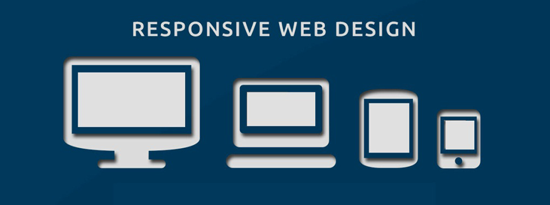7 Deadly Web Design Sins Many Startup Entrepreneurs Commit

Today, websites act as an online branding and sales hub for companies. But for a startup, a website assumes critical importance as it might have no other way of delivering its brand message to its audience.
A website can help a startup reach millions of people. This is why, it's important that new entrepreneurs design their websites in a way such that any visitor who views it gets to know what their business is all about and is persuaded to try out the start-up's products.
Murphy's Law is prevalent in the world of website design as well - things will go wrong in any given situation, if you give them a chance. At times, startup entrepreneurs make mistakes while designing their websites. If these mistakes remain unsolved, they can badly affect business growth.
Here, are the seven deadly Web design "sins" many newbie entrepreneurs commit while designing a website for their startup:
1. Overlook Target Audience

New entrepreneurs are full of zeal and enthusiasm to convert their idea into a profitable business. Since these entrepreneurs are highly enthusiastic to see their websites go live, they may in their rush forget to research about their target audiences. This is one of the fatal Web design mistakes that may badly affect their conversions.
They should therefore carefully research their target audiences and then design their websites according to the results generated from their research.
2. Offering Wide Range of Features

Startup entrepreneurs, at times, ask Web designers to incorporate a wide range of features on their sites. They haven this misconception that the more the number of features on a website, the more value it will deliver to users. The truth, however, is exactly the opposite. Offering too many features on the homepage is the biggest design disaster an entrepreneur can make. Websites designed with cluttered pages overwhelm site visitors, making it difficult for those visitors to find what they are looking for.
Instead, startup entrepreneurs should focus on only the most mandatory features of the website and be really choosy while selecting the other non-essential features.
3. Stuffing Content with Keywords for Better Rankings

All business owners know the importance of ranking high on search engines; better ranking on search engines attracts targeted website traffic, which ultimately leads to more sales for the business.
One of the most tempting ways for budding entrepreneurs to boost SEO is to stuff their content with keywords. But they should avoid making this critical mistake as keyword stuffing is a black hat tactic that can evoke search engine penalties like dropping their page rank or worse, banning their site. The adequate keyword density they should consider for their site is 2-5 percent of content.
4. Burying Contact Information Too Deep within the Site

This is the most common Web design mistake often made by startup entrepreneurs. One of the goals of a website is to make it possible for visitors to easily contact the business. However, some startup websites do not provide their contact information directly; rather visitors are asked to fill out a form to get in touch with the business. This can be highly annoying for those who are looking to get in touch with the business instantly.
Instead of burying contact information, startup websites should make all contact information like phone number, email address, office address, etc., readily accessible for visitors.
5. Focusing Only on Making Website Aesthetically Appealing

A large number of newbie entrepreneurs fall into this trap. They only focus on the looks of their websites and nothing else. However, the truth is even if a website has a really pleasant design, but fails to provide good user experience it will badly affect website traffic. So, apart from its ability to offer a visually stunning experience, a website should have user-friendly navigation and clear calls to action in order to be effective.
Startups should consider using breadcrumb navigation. Breadcrumbs allow visitors to see where the current page is in relation to the website's hierarchy.
6. Lack of Trust Building Steps

Trust is an important factor in online success, especially for startups that haven't yet established a recognizable name in their market. However, many startup entrepreneurs often forget about this essential factor while designing a website for their business which may then result in low visitor traffic.
They should, therefore, design the website such that it fits their brand and looks trustworthy in the eyes of their target customers. One great way they can make their website appear professional and reputable is to display client testimonials somewhere on the site. They should even integrate social media into their website to make connections, build trust and drive transactions.
7. Ignoring Mobile Users

One of the worst mistakes a startup entrepreneur can commit while designing a website is not making it mobile-friendly. Experts predict that by 2015, local mobile searches (85.9 billion) are expected to exceed desktop searches (84 billion). It is quite evident from these figures that websites that do not support mobile visitors will lose out on targeting this growing user base.
Startup entrepreneurs should incorporate a responsive layout to ensure their site is viewed seamlessly across all screen sizes to attract those potential customers who are accessing the web through devices like smartphones and tablets.
Summary
New entrepreneurs should create a website that resonates with their target audience and helps them strengthen sales funnel. By not committing any of the aforementioned Web design sins, aspiring entrepreneurs can be rest assured of creating a successful website that will not only attract more visitors but also generate more leads.

Subscribe to Our Newsletter!
Latest in Web Design








